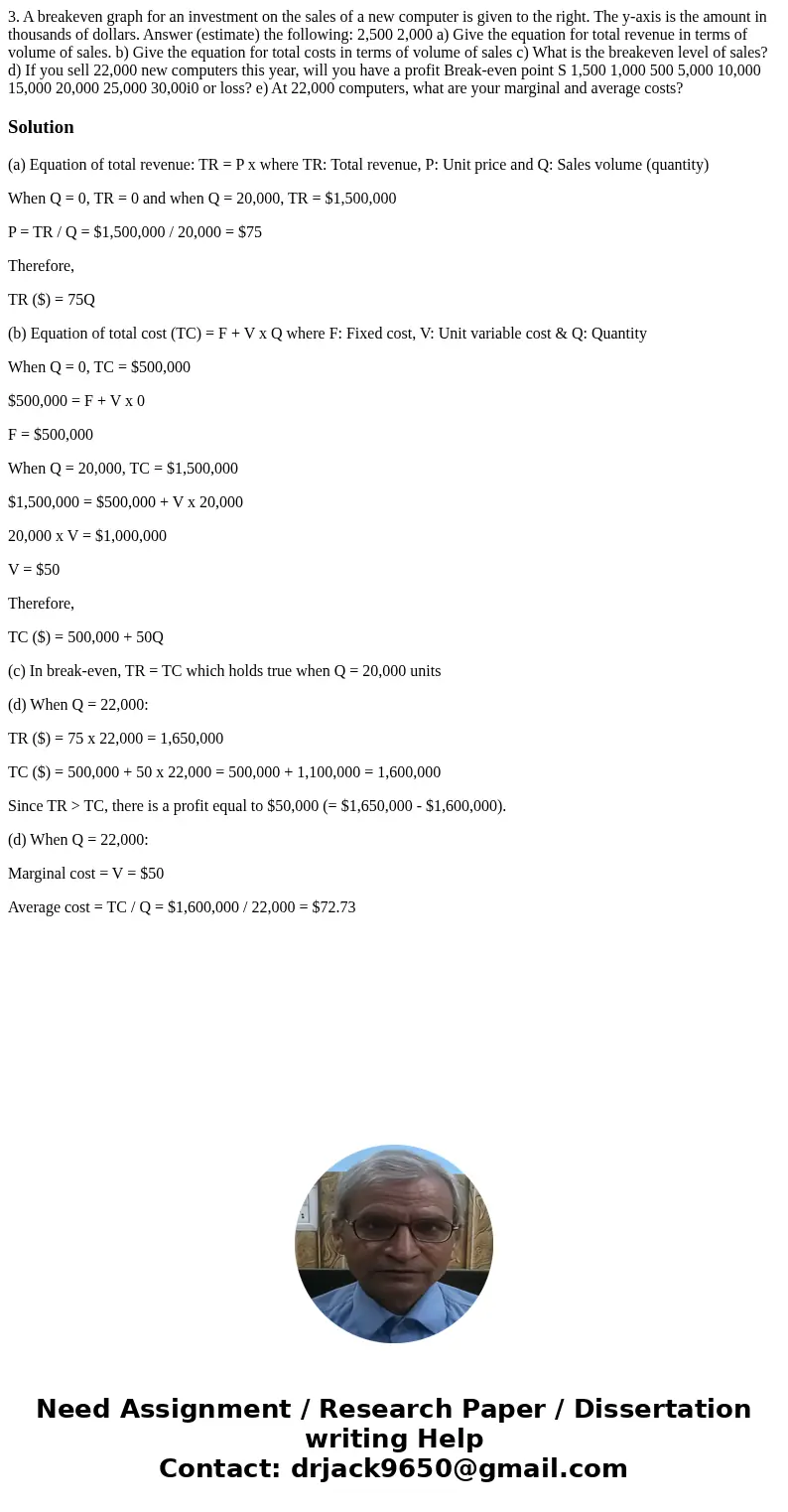3 A breakeven graph for an investment on the sales of a new
Solution
(a) Equation of total revenue: TR = P x where TR: Total revenue, P: Unit price and Q: Sales volume (quantity)
When Q = 0, TR = 0 and when Q = 20,000, TR = $1,500,000
P = TR / Q = $1,500,000 / 20,000 = $75
Therefore,
TR ($) = 75Q
(b) Equation of total cost (TC) = F + V x Q where F: Fixed cost, V: Unit variable cost & Q: Quantity
When Q = 0, TC = $500,000
$500,000 = F + V x 0
F = $500,000
When Q = 20,000, TC = $1,500,000
$1,500,000 = $500,000 + V x 20,000
20,000 x V = $1,000,000
V = $50
Therefore,
TC ($) = 500,000 + 50Q
(c) In break-even, TR = TC which holds true when Q = 20,000 units
(d) When Q = 22,000:
TR ($) = 75 x 22,000 = 1,650,000
TC ($) = 500,000 + 50 x 22,000 = 500,000 + 1,100,000 = 1,600,000
Since TR > TC, there is a profit equal to $50,000 (= $1,650,000 - $1,600,000).
(d) When Q = 22,000:
Marginal cost = V = $50
Average cost = TC / Q = $1,600,000 / 22,000 = $72.73

 Homework Sourse
Homework Sourse